por Juanlu González
Ex: http://paginatransversal.wordpress.com
Con los vaivenes que da la política internacional, es lógico que muchas personas se hallen desconcertadas por los sucesos acontecidos durante los últimos meses. No ya por giros en alianzas, filias o fobias derivadas de cambios de gobierno, ya sea de manera democrática, por golpes de estado o por exigencias imperiales, sino por los giros copernicanos practicados por gobiernos supuestamente estables.
¿Cómo pueden los aliados de la OTAN en la guerra contra Siria ser ahora los enemigos en Irak? —se preguntarán algunos. ¿Cómo Irán y Estados Unidos pueden actuar conjuntamente en el cambio de gobierno en Irak?, ¿cómo el Pentágono está ofreciendo información de inteligencia al Ejército Árabe Sirio para luchar contra el Estado Islámico? —dirán otros.
Para contestar certeramente a estas cuestiones y otras por el estilo es necesario disponer de informaciones directas y permanentes de inteligencia. Obviamente muchos de estos movimientos diplomáticos jamás verán la luz en medios de comunicación o en ensayos actuales, por tanto, nos tenemos que conformar con interpretar las señales que nos van llegando y leer entre líneas las declaraciones de los actores implicados en este complejo juego geopolítico.
La mayor parte de la oposición a Assad está desolada, aunque llevábamos años publicando en webs contrainformativas las atrocidades de los yihadistas y su filiación terrorista, la coalición atlantista de agresores contra Siria había logrado mantener a salvo —o casi— la imagen de los «revolucionarios», ocultando sus nacionalidades y la mayoría de ejecuciones, violaciones, decapitaciones y ataques químicos realizados contra el pueblo sirio. Pero ya no. Por la razón que sea, ahora es conveniente, y hasta necesario, que todo el mundo conozca lo que hacen los rebeldes sirios o los terroristas iraquíes para poder atacarles a placer.
Parece que apenas queda sitio para la oposición moderada que Occidente mimaba y a los medios tanto gustaba. Imagino cómo se sentirá también esa caterva de izquierdistas que cayeron en el juego propagandístico de la OTAN, cuando comprueben que muchos de los cuadros del Estado Islámico provienen del otrora encumbrado Ejército Libre Sirio (ESL), ahora reducido a una mínima expresión. Muchos hemos visto esa reveladora imagen del senador McCain reunido con el hoy jefe del Estado Islámico, el mismísimo Abu Bakr el-Baghdadí, representando a la oposición siria moderada, esa en la que occidente depositaba todo su apoyo militar y político para conquistar Siria.
Pero no ha sido la única vez que sucede algo así, no es un hecho aislado ni derivado de la pérdida de poder el ESL frente a otros grupos como afirmó recientemente Hillary Clinton. En los inicios de la milicia rebelde se situaba al frente de la misma a Abdelhakim Belhadj, un conocido terrorista libio de al Qaeda que llegó a ser gobernador de Trípoli tras la autodenominada «revolución» contra Gadafi. Por citar algún ejemplo más, podríamos hablar del coronel desertor Sekkar al Ahmad, probablemente muerto ayer mismo por la aviación siria en Deir Ezzor cuando se bombardeó una reunión de dirigentes de este grupo terrorista.
Obviamente, el debate ahora se sitúa en la elección entre Bachar el Assad o el terrorismo. Realmente siempre ha sido así, lo que sucede es que no han dejado que se visualizara de esta manera, confiados en reconducir la situación a posteriori, una vez que se eliminara a Assad y a todo su gobierno. Una auténtico sin sentido después de ver qué ha sucedido y está sucediendo aún en Libia, donde los yihadistas introducidos por occidente y sus aliados mantienen sumido al país en una espiral de muerte sin fin y donde llamar estado a lo que reina allá es poco menos que un insulto a la inteligencia.
Y es que Estados Unidos no puede atacar al Ejército Islámico en Irak y dejarlo operativo en Siria. No se puede apagar medio fuego. Aunque no le guste, está obligado a ayudar a Assad a acabar con la única facción de los rebeldes realmente poderosa, lo que equivaldrá a mantenerlo en el poder por una buena temporada. Así las cosas, tampoco es probable que tiren por la borda más de tres años de propaganda sin más y pretendan utilizar la ayuda militar como arma para activar un cambio de gobierno, como ya hicieron exitosamente en Irak con el ex primer ministro iraquí Nuri al-Maliki. Sin embargo, Siria no está sola, Rusia e Irán ya han redoblado los envíos de ayuda militar a Damasco y Hezbollah cada vez tiene más claro que ayudar a Siria es mantener la guerra alejada de las fronteras de Líbano y eso es o que pretenden continuar haciendo.
Pero, con lo bien que les ha venido a Estados Unidos la presencia del Estado Islámico en Irak, ¿por qué combatirlos ahora? Por la red circulan informaciones comprometedoras que vinculan a occidente con el Estado Islámico, desde saudíes reaccionarios que culpan a Israel y Estados Unidos de su creación, hasta periodistas norteamericanos que afirman que hay centenares de agentes de la CIA infiltrados en las filas yihadistas, hasta otras que afirman que Baghdadí tiene nombre falso, es judío y agente del Mossad. También hay otras declaraciones —sin confirmar— de Edward Snowden en las que achaca al Mossad y a la CIA el surgimiento del EI y el entrenamiento de sus líderes. Sin entrar a discutir su veracidad, es muy probable que, como mínimo, este grupo terrorista —como al Qaeda— esté bastante infiltrado por agentes de occidente y países aliados. Es algo obvio, teniendo en cuenta que comparten dirigentes con el Ejercito Sirio Libre y que estos estaban prácticamente al servicio de la OTAN. También las fuentes de financiación de los terroristas tienen su origen en Estados Unidos o en su entorno cercano. Buena parte de su armamento es el que fue entregado a los rebeldes «moderados» en Siria, además de recientes envíos procedentes del gobierno neonazi de Ucrania, cuyo rol vamos conociendo poco a poco, pagado con petrodólares del Golfo.
¿Qué ha podido suceder? Oficialmente lo venderán dentro de algunos años como una historia bien repetida: terrorista árabe conoce a servicio de inteligencia occidental, enseguida surge una relación amorosa entre ellos, trabajan juntos contra enemigos comunes durante algunos años, llega el desamor, rompen su relación y los terroristas, resentidos, se revuelven contra sus anteriores parejas de hecho. Esta película la hemos oído decenas de veces para explicar por qué a tantos terroristas famosos, incluido Bin Laden, se los ha relacionado con Estados Unidos o sus adláteres. A Washington no le molestaba el Estado Islámico en Siria… pero tampoco en Irak mientras era una amenaza sólo para Maliki. No fue hasta que los terroristas cruzaron la línea del Kurdistán, el estado que han estado fraguando durante tantos años con tanto mimo y ahínco entre Washington y Tel-Aviv en el norte de Irak, cuando se decidió pasar a la acción. Los campos de petróleo kurdos también se supone que tendrían algo que ver en el cambio de rumbo, probablemente mucho más que las matanzas de civiles que el EI estaba provocando, muy similares a las que hemos visto tantas veces en la guerra contra Siria y que jamás han denunciado ni se han atrevido si quiera a considerar cuando otros lo han hecho.
Hete aquí que el territorio ocupado por Daesh (el nombre en árabe del Estado Islámico) en ambos países se corresponde exactamente con el diseño de estado que pintó el equipo de Bush en aquel Proyecto para el Gran Oriente Medio que redibujaba las fronteras de la región en pequeños países homogéneos confesionalmente, manejables, poco poderosos… tras un periodo de «caos creativo» como el que justamente ahora vivimos. ¿Coincidencia o simple convergencia de intereses? que cada cual piense lo que quiera, pero no cabe duda que, cuando menos, resulta bastante extraño. Cuando han cruzado las líneas rojas, o si se prefiere, el territorio que les había sido asignado, es cuando los terroristas se han convertido en una amenaza global, nunca antes.
¿Y qué pinta Irán en todo esto? ¿Por qué apoya a Estados Unidos? ¿Cómo han colaborado juntos en la destitución de su aliado Maliki en Irak? Par empezar, la República Islámica es la más interesada en acabar con el poder de los terroristas sunníes, no podemos obviar que en el presente se desarrolla una verdadera guerra mundial entre sunníes y chiíes en la que Irán tiene mucho que perder. Por otro lado, Teherán necesita superar la amenaza de guerra que pende sobre su cabeza por el programa nuclear y es posible que EEUU haya sentado las bases para un acuerdo definitivo en cuyo paquete estaría también la cabeza de Maliki.
Esto hasta el día de hoy, mañana quién sabe…
Fuente: bits Rojiverdes





 del.icio.us
del.icio.us
 Digg
Digg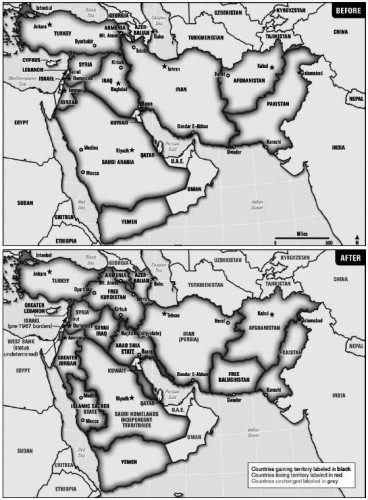
 Comme les politiciens irakiens n'avaient jamais laissé de côté leurs différences sectaires pour former un exécutif viable qui imposerait son autorité sur tout le territoire, on devinait bien que cette incursion du calife «fantastique» pourrait avoir des conséquences graves et dévastatrices sur les institutions si fragiles du pays. On sentait bien aussi que l'Irak serait de nouveau bombardé mais on n'imaginait pas que les Etats-Unis feraient si vite. Le plan Al-Baghadi était donc sans doute classé comme une opération d'urgence avant de quitter l'Afghanistan. Alors, on livra en appât aux pseudos journalistes experts la métaphore du califat. On vit alors apparaître dans les colonnes des journaux l'historique du califat : un titre qui datait du VIIème siècle, supprimé par Kemal Atatürk en 1924, après le démantèlement de l'Empire ottoman et qui ne conservait qu'une valeur religieuse puisqu'en 1923, on avait créé la République de Turquie.
Comme les politiciens irakiens n'avaient jamais laissé de côté leurs différences sectaires pour former un exécutif viable qui imposerait son autorité sur tout le territoire, on devinait bien que cette incursion du calife «fantastique» pourrait avoir des conséquences graves et dévastatrices sur les institutions si fragiles du pays. On sentait bien aussi que l'Irak serait de nouveau bombardé mais on n'imaginait pas que les Etats-Unis feraient si vite. Le plan Al-Baghadi était donc sans doute classé comme une opération d'urgence avant de quitter l'Afghanistan. Alors, on livra en appât aux pseudos journalistes experts la métaphore du califat. On vit alors apparaître dans les colonnes des journaux l'historique du califat : un titre qui datait du VIIème siècle, supprimé par Kemal Atatürk en 1924, après le démantèlement de l'Empire ottoman et qui ne conservait qu'une valeur religieuse puisqu'en 1923, on avait créé la République de Turquie.  Le porte-parole du mufti d'Egypte (un des principaux leaders spirituels sunnites) a déclaré cet été que «le califat est une illusion». «A peine, dit-il, une réponse crédible au chaos irakien». D'autres chefs religieux sunnites ont souligné l'aspect «délirant» de la proposition car«on ne saurait former un Etat par le pillage, le sabotage et les bombardement». Un député irakien est convaincu de son côté que c'est en réalité un projet bien pensé, calculé, réfléchi, un projet même rationnel, trop rationnel même pour être vraiment oriental ! En fait, l'Irak ne doit jamais se relever pour l'équilibre du monde.
Le porte-parole du mufti d'Egypte (un des principaux leaders spirituels sunnites) a déclaré cet été que «le califat est une illusion». «A peine, dit-il, une réponse crédible au chaos irakien». D'autres chefs religieux sunnites ont souligné l'aspect «délirant» de la proposition car«on ne saurait former un Etat par le pillage, le sabotage et les bombardement». Un député irakien est convaincu de son côté que c'est en réalité un projet bien pensé, calculé, réfléchi, un projet même rationnel, trop rationnel même pour être vraiment oriental ! En fait, l'Irak ne doit jamais se relever pour l'équilibre du monde. 

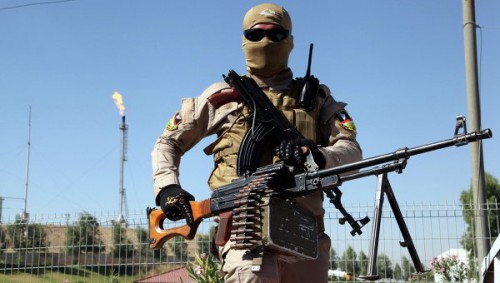





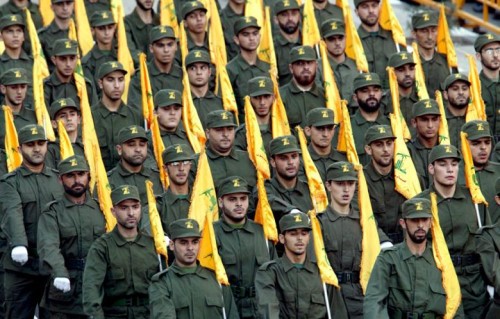
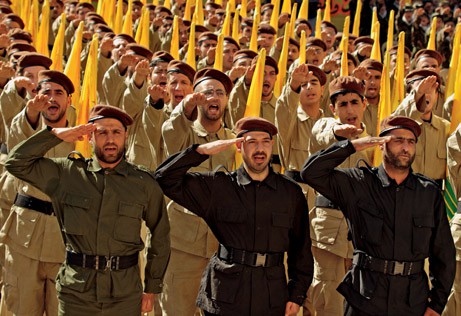
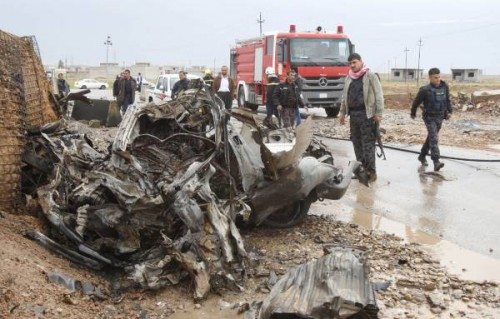
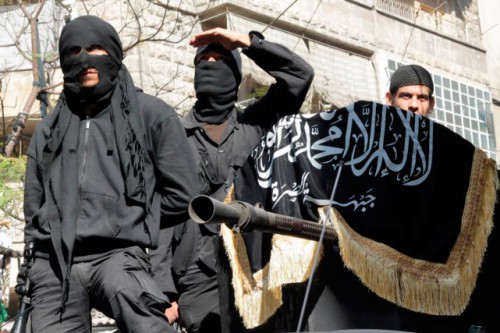
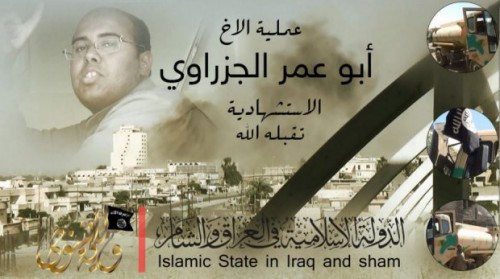

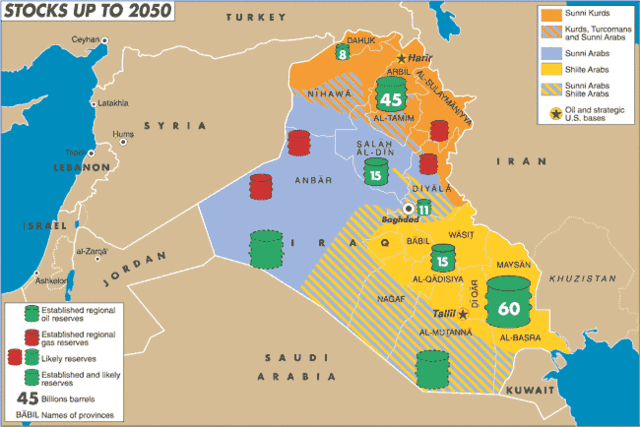
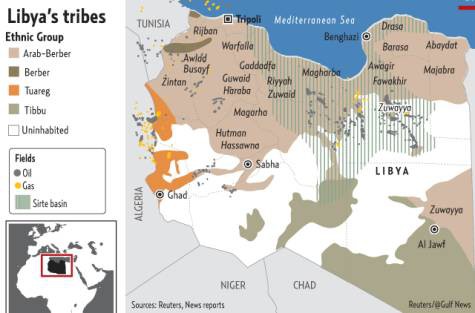
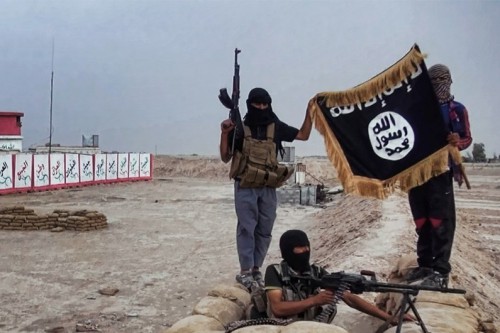



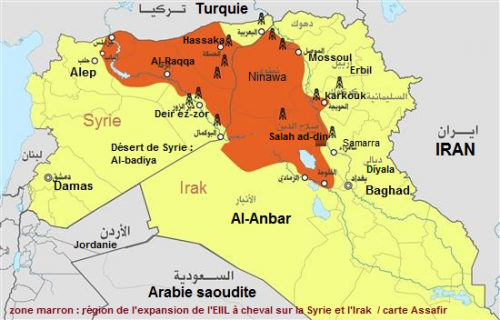

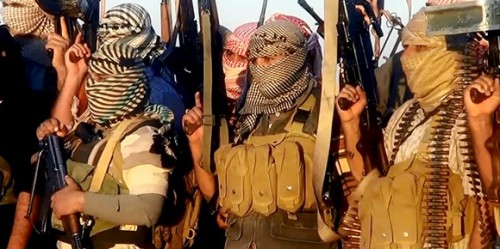

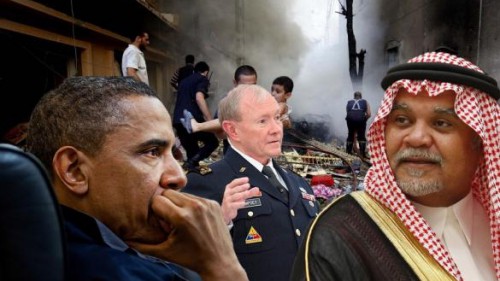
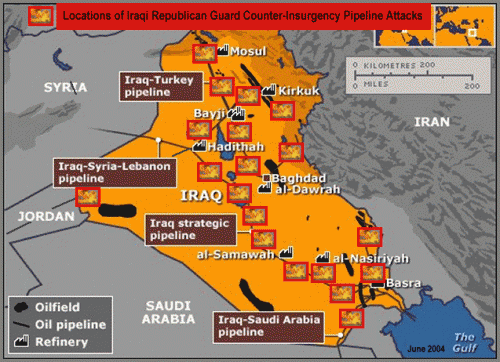
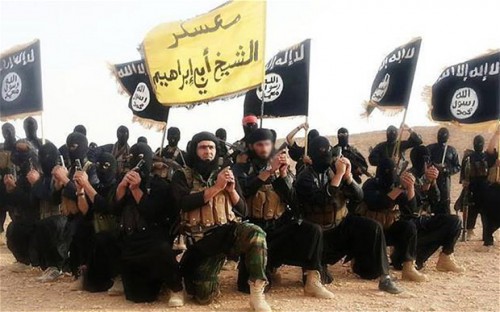
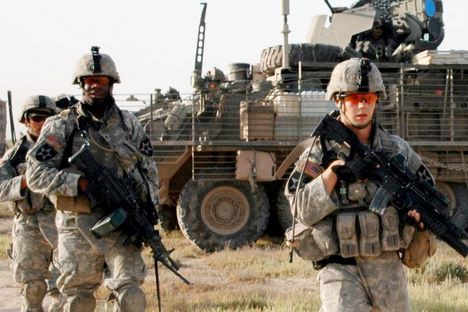
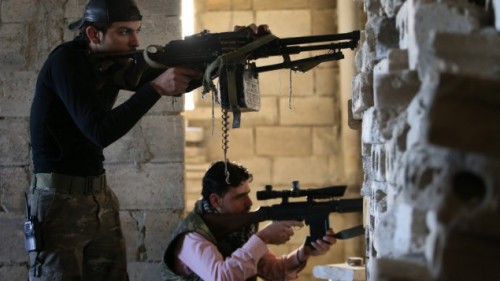
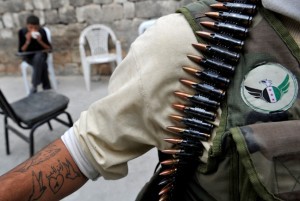 The third and final step the US must take upon losing a war is to leave chaos where victory was denied, and attach responsibility for the conflict to a disposable elected politician – in this case US President Barack Obama. While the war was clearly conceived during the administration of George Bush as early as 2007, it was executed under the watch of Obama. By attaching responsibility for the conflict to Obama, when his term is up and he passes into the hindsight of history, corporate-financier funded policy makers will have before them a clean slate upon which to begin carrying out the next leg of their continuous agenda.
The third and final step the US must take upon losing a war is to leave chaos where victory was denied, and attach responsibility for the conflict to a disposable elected politician – in this case US President Barack Obama. While the war was clearly conceived during the administration of George Bush as early as 2007, it was executed under the watch of Obama. By attaching responsibility for the conflict to Obama, when his term is up and he passes into the hindsight of history, corporate-financier funded policy makers will have before them a clean slate upon which to begin carrying out the next leg of their continuous agenda.